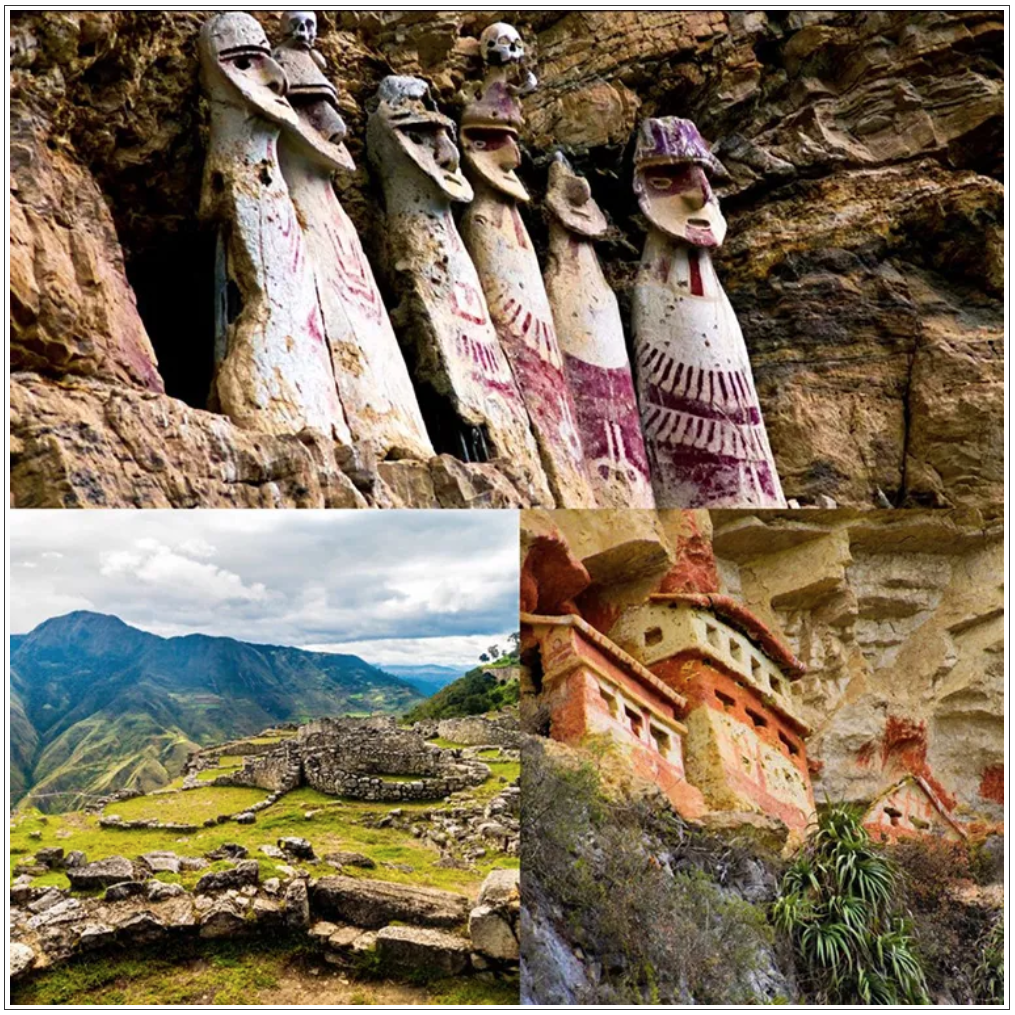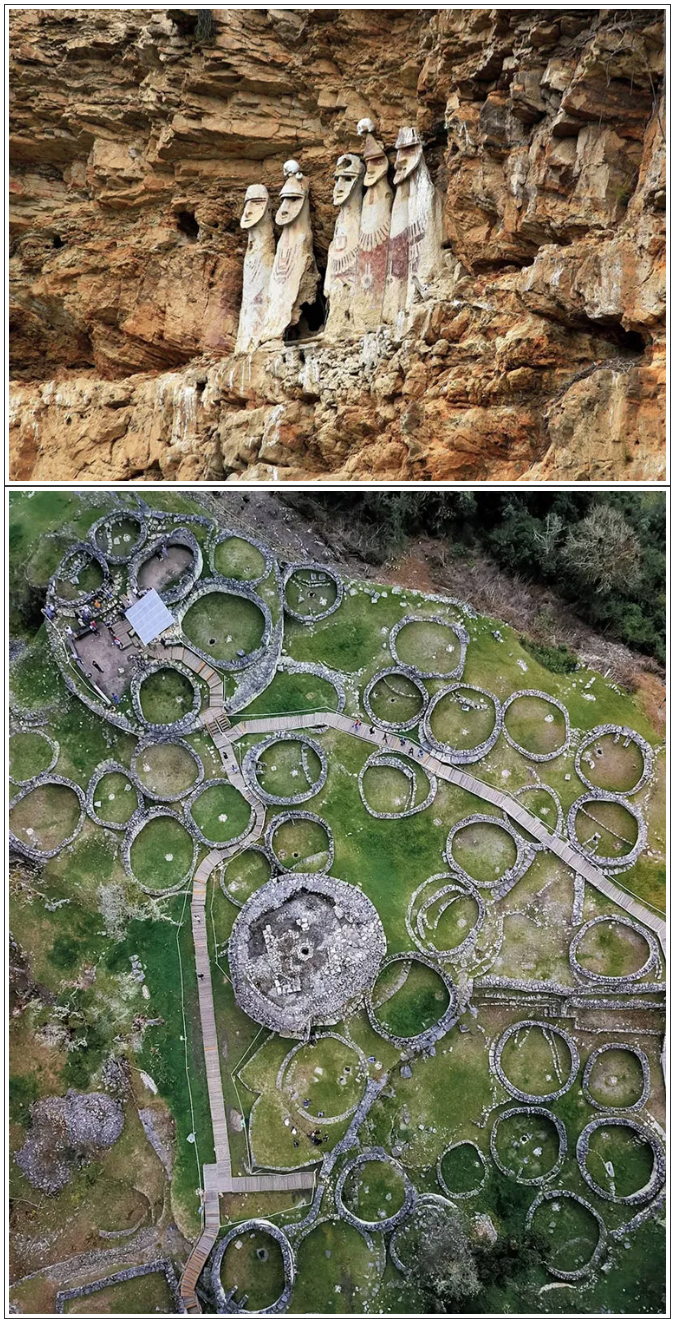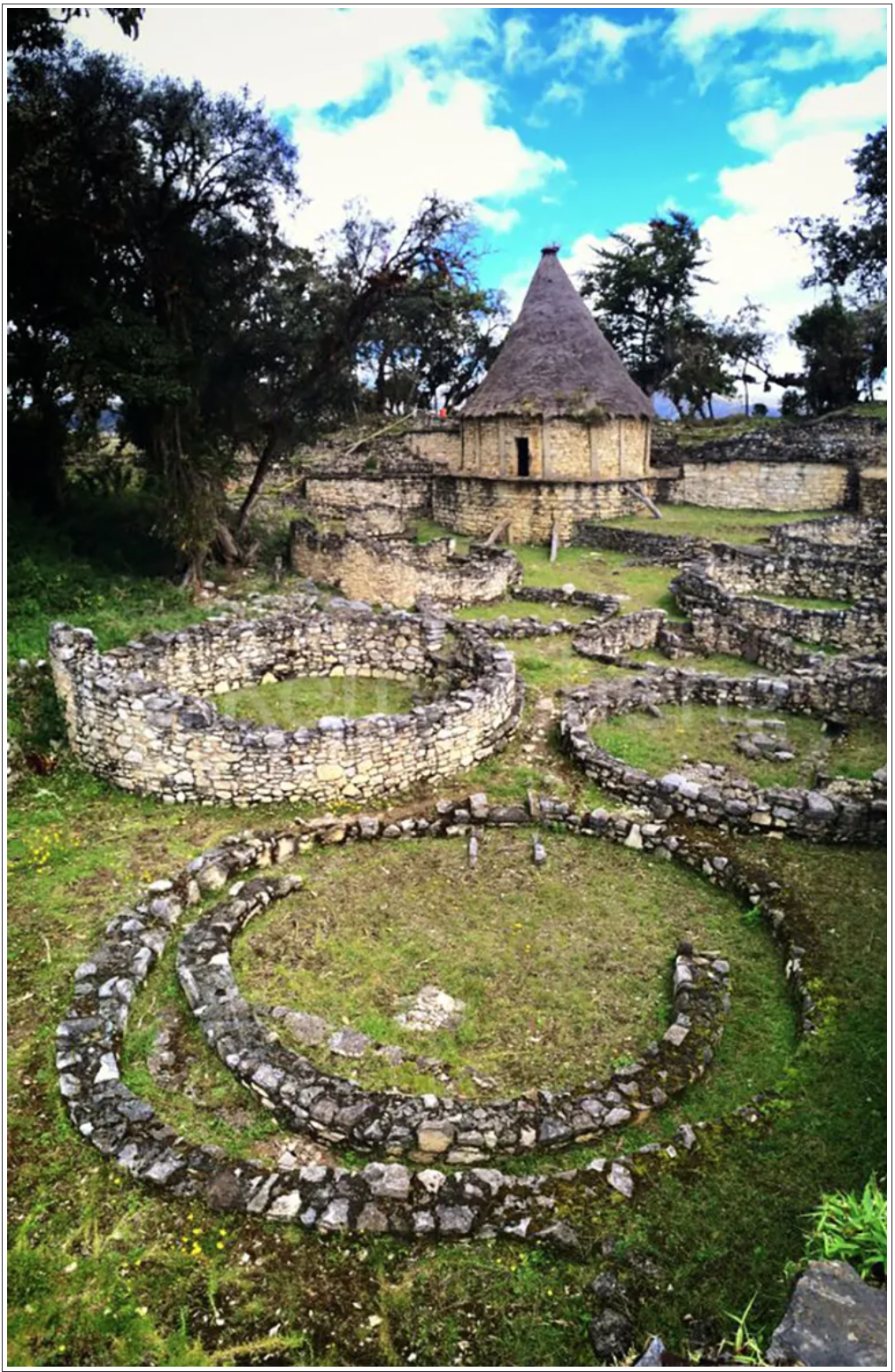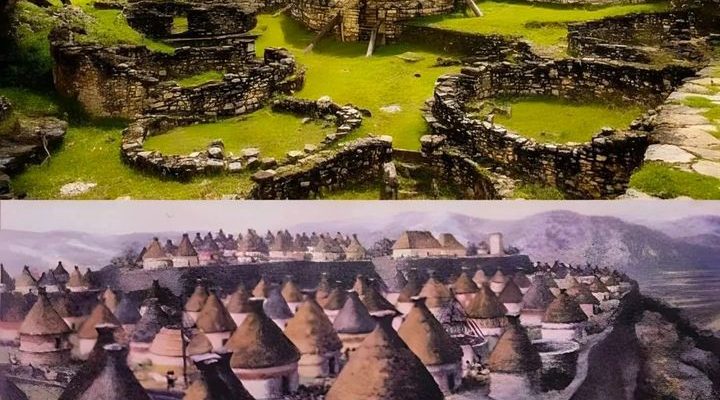The Chachapoya civilization, also called the “Warriors of the Clouds”, was a culture of the Andes living in the cloud forests of the southern part of the Department of Amazonas of present-day Peru. Predating the Inca by over six centuries, Chachapoya culture flourished from around AD 800 in Peru’s remote northern highlands. The population, which may have numbered 500,000 at its peak, produced powerful shaman and engendered a tough-fighting ethos. The Inca Empire conquered their civilization shortly before the Spanish conquest in the 16th century. Chachapoyas left behind impressive ruins that echo their prowess in engineering and architecture.

The Chachapoyas are known for their impressive stone structures, including fortified hilltop settlements and intricate burial sites, such as the famous cliffside tombs of Revash and the sarcophagi of Karajia. The architectural model of the Chachapoyas is characterized by circular stone constructions as well as raised platforms constructed on slopes. Their walls were sometimes decorated with symbolic figures. Some structures such as the monumental fortress of Kuelap and the ruins of Cerro Olán are prime examples of this architectural style.
The architectural model of the Chachapoya civilization is characterized by circular stone constructions as well as raised platforms constructed on slopes

One of the most impressive remains created by Chachapoyas is the Sarcophagi of Carajía (or Karijia) that kept watch over the Utcabamba Valley for hundreds of years. Created some time in the 15th century by the Chachapoya civilization, the seven standing burial capsules (formerly eight, although one of them collapsed during a 1928 earthquake) are located almost 700 feet above the valley floor. While a great deal of the Chachapoya culture was lost after being conquered by the Incan people and simply through time, the sarcophagi survived largely intact due to their seemingly impossible location. Each of the figures stands a remarkable eight feet tall and change, constructed out of grass and clay and built right into the cliff face. Some of the graves even still retain the human skulls that were installed atop the sarcophagi.
Eight sarcophagi containing mummies standing on the cliff side, referred to by local residents as the “ancient wise men”







